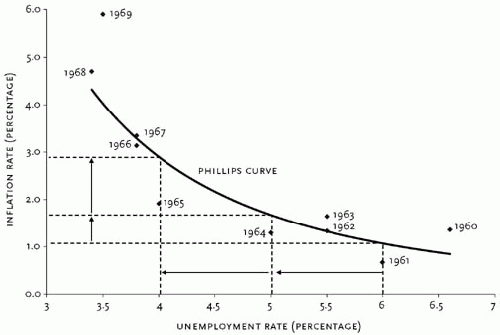From Paul Craig Roberts Website
For a decade central banks have printed enormous quantities of new money. The excuse is to stimulate the economy by reviving inflation. However, the money has, for the most part, driven up the prices of financial assets instead of consumer and producer prices. The result has been a massive increase in the inequality of income, wealth, and opportunity.
The quantitative easing policy followed by central banks is based on belief in an economic relationship between inflation and GDP growth -- the Phillips curve -- that supply-side economics disproved during the Reagan administration. The belief in the Phillips curve persists, because supply-side economics was misrepresented by the financial media and neoliberal junk economics.
The fact that something as straightforward and well explained as supply-side economics can be misrepresented for 35 years should give us all pause. When successive chairmen of the Federal Reserve and other central banks have no correct idea what supply-side economics is, how can they formulate a workable monetary policy? They cannot.
Phillips Curve R.I.P.
Paul Craig Roberts
Republished with permission from The International Economy
The Phillips Curve is the modern day version of the Unicorn. People believe in it, but no one can find it. The Fed has been searching for it for a decade and the Bank of Japan for two decades. So has Wall Street.
Central banks' excuse for their massive injections of liquidity in the 21st century is that they are striving to stimulate the 2% rate of inflation that they think is the requirement for sustained rises in wages and GDP. In a total contradiction of the Phillips Curve, in Japan massive doses of central bank liquidity have resulted in the collapse of both consumer and financial asset prices. In the US the result has been a large increase in stock averages propelled by unrealistic P/E ratios and financial speculation resulting in Tesla's capitalization at times exceeding that of General Motors.
In effect, pursuit of the Phillips Curve has become a policy of ensuring financial stability of over-sized banks by continually injecting massive amounts of liquidity. The result is greater financial instability. The Fed is now confronted with a stock market disconnected from corporate profits and consumer disposable income, and with insurance companies and pension funds that have been unable for a decade to balance equity portfolios with interest bearing debt instruments. Crisis is everywhere in the air. What to do?
The Phillips Curve has been working its mischief for a long time. During the Reagan administration the Phillips Curve was responsible for an erroneous budget forecast. In the 21st century the Phillips Curve is responsible for an enormous increase in the money supply. The Reagan administration paid a political price for placing faith in the Phillips Curve. The price for the unwarranted creation of money by central banks in the 21st century is yet to be paid.
The Phillips Curve once existed as a product of Keynesian demand management and high tax rates on personal and investment income. Policymakers pumped up consumer demand with easy money, but high marginal tax rates impaired the responsiveness of supply. The consequence was that prices rose relative to real output and employment. Supply-side economists said the solution was to reverse the policy mix: a tighter monetary policy and a "looser" fiscal policy in terms of lower marginal tax rates that would increase the responsiveness of supply.
During the 1980s the economics establishment was too busy ridiculing supply-side economics as "voodoo economics," "trickle-down economics," "tax cuts for the rich," and for allegedly claiming that tax cuts pay for themselves, to notice what I pointed out at the time: the dreaded Phillips Curve with its worsening trade-offs had disappeared. The high GDP growth rates of the economic expansion beginning in 1983 were accompanied by inflation that collapsed from near double-digit levels to 3.8% in 1983 and 1.1% in 1986. Of course, the economics establishment wasn't interested in such embarrassing results, and so the story became the "Reagan deficits." The establishment reduced supply-side economics to the claim that tax cuts paid for themselves, and the deficits proved supply-side economics to be wrong. Case closed. This remains the story today as told by Wikipedia and in economic classrooms.
The implementation of the Reagan administration's policy was disjointed, because Fed chairman Paul Volcker saw the supply-side policy as a massive fiscal stimulation that would send already high inflation rates soaring. Concerned that monetarists would blame him for what he thought would be the inflationary consequences of irresponsible fiscal stimulus, Volcker slammed on the monetary brakes two years before the tax rate reductions were fully implemented. This was the main reason for the budget deficits, not a "Laffer Curve" forecast that was not made. The Treasury's forecast was the traditional static revenue estimate that every dollar of tax cut would cost a dollar of revenue.
In effect, the Phillips Curve became an ideology, and economists couldn't get free of it. Consequently, they have misunderstood "Reaganomics" and its results and subsequently policymakers have inflicted decades of erroneous policies on the world economy.
(Note: You can view every article as one long page if you sign up as an Advocate Member, or higher).






